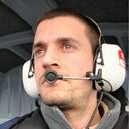Environmental Impact of Volcanic Emissions
A special issue of Geosciences (ISSN 2076-3263). This special issue belongs to the section "Geochemistry".
Deadline for manuscript submissions: closed (25 July 2021) | Viewed by 4512
Special Issue Editors
Interests: geochemistry; volcanology; isotope geochemistry; hydrothermal systems; volcano monitoring; chemical weathering; aqueous geochemistry; volcanic emissions; environmental geochemistry; analytical methods for geochemistry; direct sampling of volcanic plumes
Interests: ore deposits; stable isotopes; geochemistry; quantitative mineralogy; geometallurgy; environmental pollution; waste recycling; supplementary cemetitous materials; calcined clays
Special Issues, Collections and Topics in MDPI journals
Special Issue Information
Dear Colleagues,
Volcanoes emit large amounts of products onto the Earth’s surface as well as into the atmosphere. Based on their geochemical behavior, the volcanogenic elements move in several ways. The most refractory ones travel through solid particles and lava flows, semi-volatiles are usually abundant in volcanics but a significant amount are also emitted as gaseous chlorides and aerosol, and volatiles are mainly emitted as gaseous phases. Therefore, both violent eruptions, effusive activity, and quiescent degassing represent important sources of volcanogenic elements that affect the surroundings of the volcanic systems. The understanding of the processes governing the mobility and dispersion of volcanic elements is fundamental for constraining the environmental impact of volcanic emissions. This Special Issue aims to share scientific evidence, results, and ideas on the impact of volcanic emissions on the environment.
Dr. Marcello Liotta
Prof. Dr. Pura Alfonso
Guest Editors
Manuscript Submission Information
Manuscripts should be submitted online at www.mdpi.com by registering and logging in to this website. Once you are registered, click here to go to the submission form. Manuscripts can be submitted until the deadline. All submissions that pass pre-check are peer-reviewed. Accepted papers will be published continuously in the journal (as soon as accepted) and will be listed together on the special issue website. Research articles, review articles as well as short communications are invited. For planned papers, a title and short abstract (about 100 words) can be sent to the Editorial Office for announcement on this website.
Submitted manuscripts should not have been published previously, nor be under consideration for publication elsewhere (except conference proceedings papers). All manuscripts are thoroughly refereed through a single-blind peer-review process. A guide for authors and other relevant information for submission of manuscripts is available on the Instructions for Authors page. Geosciences is an international peer-reviewed open access monthly journal published by MDPI.
Please visit the Instructions for Authors page before submitting a manuscript. The Article Processing Charge (APC) for publication in this open access journal is 1800 CHF (Swiss Francs). Submitted papers should be well formatted and use good English. Authors may use MDPI's English editing service prior to publication or during author revisions.
Keywords
- Volcanic emissions
- Environmental impact
- Volcanogenic elements
- Gaseous emissions
- Volcanic ash
Benefits of Publishing in a Special Issue
- Ease of navigation: Grouping papers by topic helps scholars navigate broad scope journals more efficiently.
- Greater discoverability: Special Issues support the reach and impact of scientific research. Articles in Special Issues are more discoverable and cited more frequently.
- Expansion of research network: Special Issues facilitate connections among authors, fostering scientific collaborations.
- External promotion: Articles in Special Issues are often promoted through the journal's social media, increasing their visibility.
- e-Book format: Special Issues with more than 10 articles can be published as dedicated e-books, ensuring wide and rapid dissemination.
Further information on MDPI's Special Issue polices can be found here.






